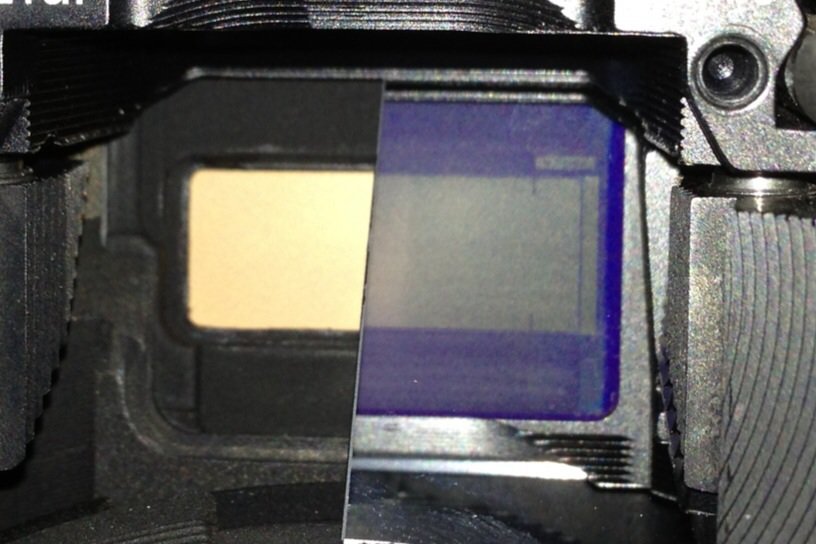-
Posts
1,004 -
Joined
-
Last visited
Everything posted by Gregory Irwin
-

Detailed breakdown of classic 35mm Arri IIC camera by Dom Jaeger
Gregory Irwin replied to Nicholas Kovats's topic in 35mm
Bravo Dom! Excellent presentation! It also brought back great memories. I used the 2C for many years and loved the simplicity of that camera. And thank you for sharing this Nicholas. G -

American Hustle
Gregory Irwin replied to joshua gallegos's topic in On Screen / Reviews & Observations
Please realize that the nearly 10,000 feet per day was primarily one camera. As for shooting with 2 cameras, that's really a question for your cinematographer with regards to lighting. You really should have a good B cam operator who understands the role of finding shots that are good for editorial. Whether they are different coverages or cut aways, the B camera could be very useful. Without that sort of experience behind it, the second camera could become a hinderence. As for VALENTINES DAY, what a blast working with Gary. He is a true one of a kind. G -

American Hustle
Gregory Irwin replied to joshua gallegos's topic in On Screen / Reviews & Observations
Hi Ryan, I just spoke to my UPM on AH and this is what he told me. We were a 2 camera show shooting 2 perf, but for the most part we were only one camera shooting at a time. We shot about 9,600 ft. of film per day. For a 35 day schedule, that equals 336,000 feet of film. It sounds like your producer is right on. Hope this helps and good luck!! G -

What goes into making a fast lens?
Gregory Irwin replied to Phillip Mosness's topic in Lenses & Lens Accessories
Dom, I am so impressed with your knowledge. Bravo! G -
The sooner in April the better for me. It's getting busy out there. Of course Yun is invited as well!
-
Ha Ha! Phil, you owe me nothing. But it would be great to have lunch with you. Adrian can join us as well! G
-
Where are you taking me to lunch? :)
-
I hope the family sues the studio, the producers, the director and the 1st AD. They all have blood on their hands. The crazy thing about this is that all IATSE crew members (thats us) are required to take specified safty classes or we are not eligable to work on a union set. I have no problem with this. I do, however, have a HUGE problem that the DGA (directors, producers and assistant directors) are not mandated to take these safty classes as we are. This must change! G
-
I got my 2 perf Arricams straight from Arri Munich, Germany. G
-
Thank you for sharing this terrible news Paul. Having lost 3 camera people to accidents in my career, this really hits home. We as a camera team member (or production team, for that matter) have the responsibility of looking out for one another. We have the responsibility to speak up when things don't seem right and are plainly unsafe. Don't assume that those in charge are completely capable of safety when they are under pressure to deliver. Only we can be the voice of reason regarding what's safe and what's not safe when it comes down to the moment. You can't be silent regarding this. Safety is ALL of our business. G
-
Dom is right on as usual! G
-
The hairs were dealt with in post by painting them out. Otherwise, we never would have finished the movie if we did extra takes for every hair. As for the K35s, let me direct your attention to the "AMERICAN HUSTLE" topic under the "On Screen" board. A lot of discussion regarding those lenses there. G
-
Here is a great view of the 2 perf gate vs. the 1:2.40 frame lines. This view is looking through the lens port of an Arricam LT with the reflex mirror half way in so we can see the reflected ground glass on the right compared to the actual gate on the left. There is no space to speak of outside of the frame lines. The full gate is the format. This is why gate hairs are such an issue. I took this image while prepping AMERICAN HUSTLE.
-
I used 2 perf on both David O. Russell movies that I was the 1st AC on. THE FIGHTER was shot with the Aaton Penelope while AMERICAN HUSTLE was shot with Arricam LTs. We never had an issue with jamming but gate hairs were inevitable. No matter what precautions you take, you will have them. Also, 2 perf is considerably noisier than the other options when considering sound. G
-
It really applies to all lenses. And we are definately overthinking this. Infinity/wide open is simply a good habit to get into when storing lenses. G
-
Ok, let's keep this simple. What happens with regards to the lens elements and groups of elements when you focus a lens towards close focus? Answer: the elements expand away from each other to where sometimes the lens itself grows physically longer. Thus there is more space between the elements. They are suspended away from each other thus becoming less stable, structurally. They are less protected. Conversely, what happens with the elements when you focus the lens to infinity? It's the exact opposite. The elements retract toward one another compacting less space between them thus more protection and less suspension against damaging forces such as vibration. The lens becomes mechanically shorter. And just to clarify, I only bubble wrap and strap the lenses for shipping purposes. I honestly don't worry about hand carrying them on board the plane. I'm usually shipping several tons of camera gear at a time and it all goes into a pile. On a day to day routine however, I always store the lenses at infinity and wide open in the lens case. I hope I didn't create confusion. G
-
Ha ha! I didn't mean to scare anyone from using them. I'm sure that they have a place somewhere... Like locked off shots! G
-
Because the lens elements are compressed together relieving any stress on the glass and/or the transport mechanism.
-
Assuming you already have a proper lens case, I always "strap" the lenses and wrap them in bubble wrap before placing them in the case. "Strapping" the lens means sticking a strip of tape across the lens barrel to insure the lens travels with the focus set at infinity and the iris is wide open. That's very important to maintain the health of the lens when considering all of the forces it will be subject to such as vibration. If you follow this procedure, you should not have any issues with shipping your lenses however you choose. G
-

American Hustle
Gregory Irwin replied to joshua gallegos's topic in On Screen / Reviews & Observations
Funny, I'm looking forward to that one as well! G -
Panavision Woodland Hills used to allow people to practice with their Panahead on the prep floor. A phone call to the rental dept. may be good to find out whether they still do this. 818-316-1000. Good luck! G
- 28 replies
-
- 2
-

-
- gearhead
- panavision
-
(and 3 more)
Tagged with:
-

American Hustle
Gregory Irwin replied to joshua gallegos's topic in On Screen / Reviews & Observations
I wish that it was that simple. Here's the basic deal: With regards to the Canon K35 lenses, there are 3 key points that are very vulnerable to DEAD PLAY or DEAD MOTION in the focus mechanism. Since it is a floating front objective design (as opposed to a fixed head design) the focusing transport is vulnerable to backlash - especially if not maintained. The K35's helical assembly is aluminum on brass which can wear very easily over time especially if this lens is from the 1979 era. The brass on aluminum helical assembly mates the parts together and has an approximate measured error of .0015” or 0.038mm backlash. This alone could account for an unreliable focus transport. Another point of interest is in the lens helical capture. This is a brass on aluminum on brass configuration that is threaded in place to the correct height and is held in position with loc-tite! This setup can potentially come loose or wear down over time and create a noticeable backlash. This means a measured .002” or 0.050mm end to end play which can easily create backlash especially if combined with some helical wear. The third point is the floating objective. The mechanism is held in by a fit and located by a brass key. Play in either or the mentioned parts could lead to an image shift as well as backlash. Remember, we were driving these lenses with powerful Preston focus motors and most likely overwhelmed the focus transport components. A final point worth mentioning is that these lenses typically have fairly strong traces of secondary color that can sometimes convolve the image quality and make seeing focus difficult at wide open. I'm not convinced that this was our case but it's a possibility. In the end, with all of the above mentioned and considering the K35's compressed focus travel, shooting these lenses on steadicam with ANY remote focus system, especially with an aggressive cinematic style as we had, would be futile. If these lenses were on a manually focused camera, where the focus puller could physically turn the barrel by hand and see the focus inscriptions, one's odds of success would be much greater. We simply had the wrong tool combination for AMERICAN HUSTLE. Sorry for this lengthy explanation - I'm a bit of a physical optics nut! :) I should also mention that Panavision's Dan Sasaki contributed to this posting. Greg -
It was ALL steadicam. There was only one or two shots that the camera sat on a sand bag inside the front and back seat of a car. That was it! G



